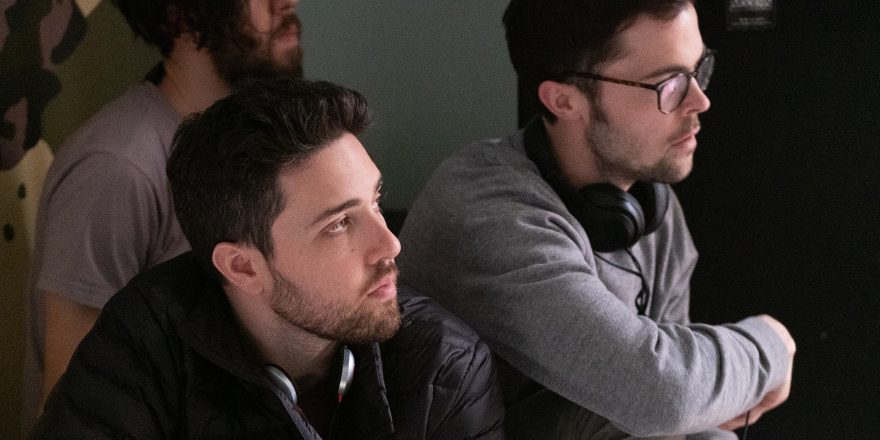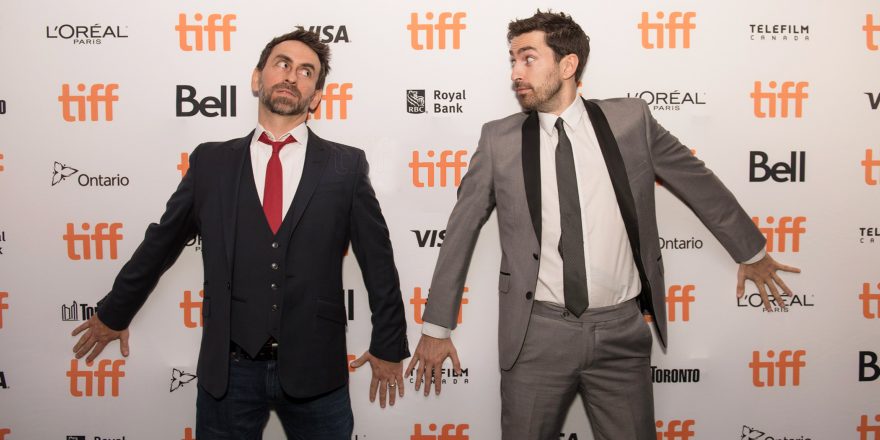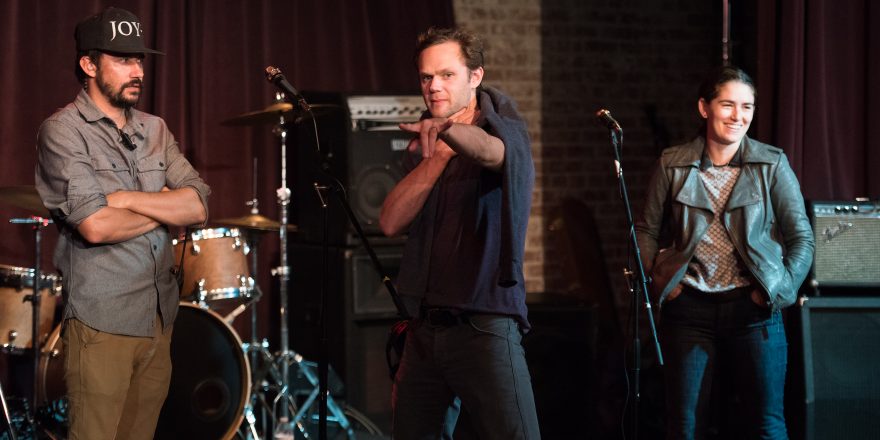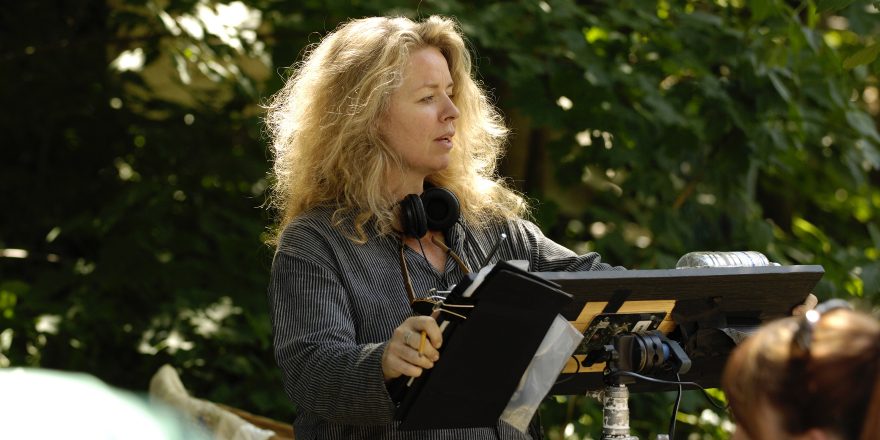When we wrapped our most recent film, Villains (in theaters September 20 – go see it!) we were struck by just how smooth and enjoyable the production phase was. Anyone who’s ever worked on a set knows that it can be hit or miss. A good shoot is great. And a bad shoot can be awful. As we tried to disassemble and diagnose the specific components that made that set a pleasant one to be on, we realized how universal the desire for a happier work environment really is. It’s a struggle that extends well beyond the world of filmmaking.
We’ve worked on a lot of different movies in a lot of different roles. And we’ve been on plenty of bad sets. When there’s an asshole in a position of power, be it a producer, director, actor or department head, it’s easy for that negativity to trickle down and infect the entire workplace. Unfortunately, this happens a lot. Like most industries, film is full of people in positions of power who are conceited, resentful, distracted, unprepared and/or lazy. However, every once in a while, you get lucky. You find that perfect cocktail of personalities and you get to experience one of the great joys in life: the fun film set.
When it’s done right, shooting a movie feels a bit like adult summer camp. You’re taken out of the day-to-day routine, thrust into an unfamiliar setting with a bunch of strangers, and in many cases, literally all bunking in the same hotel. Obstacles are overcome, new friendships are made, and when it’s all said and done, you exchange tearful goodbyes and promise to stay in touch.
When we’re lucky enough to be on set directing, we find ourselves in a unique management position that allows us to set that tone and tenor of the workplace. It’s not always easy, but the philosophy we’ve adopted is simple: whatever it takes, run a set that keeps everyone, from top to bottom, feeling engaged, empowered, and fulfilled. We don’t always succeed in this – we’re only human – but we always try.
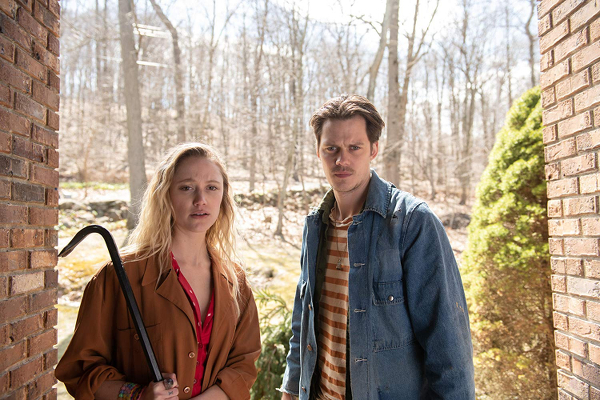
Now, we didn’t adopt this policy because we’re utopian humanists, or because we want people to like us (even though we are, and we totally do). We just think that having an engaged crew really does translate to the frame. A set where the directors empower department heads who, in turn, empower their seconds, and so on, is a set that will produce a better movie. When people see that their ideas are genuinely being considered (and many times implemented), it encourages them to contribute wholeheartedly, rather than phone it in. And considering that good directing is all about choices, picking and choosing from a pile of ideas (some of them yours, some of them your collaborators’), the more good ones you have, the better.
That’s not to say that a micromanaging auteur is doing something wrong, because the metric of success is and always will be “how good is the movie?” And a negative set experience can certainly yield a masterpiece; the annals of film history are littered with tales of canonical films being forged in the fires of conflict. But there are people out there who think that creative collaboration is a sign of weakness, or some kind of implicit admission that you don’t have a strong “vision.” And we think that’s bullshit.
It should also be noted that even a good set is stressful. But when people feel like they’re involved in the process, it becomes a positive form of stress. It’s the kind of stress that makes you feel alive. Much like running from a sabertooth tiger or lifting a car off of your child, there’s some part of the primitive brain that gets activated when you’re tasked with real-time problem solving in a high-stakes environment. It’s a part of us that otherwise lays dormant as we go through the day-to-day of modern life.
There are a lot of professions out there (some of which we’ve worked in personally) that can make the employee feel like Sisyphus, endlessly pushing the rock up the hill. Day after day, you report to the same space, perform the same task, and take home the same paycheck. But it isn’t just the monotony that saps your essence. It’s more systemic than that. We exist in a deeply entrenched system that not only prioritizes profits over people, but entirely disregards the happiness of its workforce. From the earliest days of modern industry, employees’ “fulfillment” was not a priority. Because if it doesn’t plainly yield more revenue, who cares?
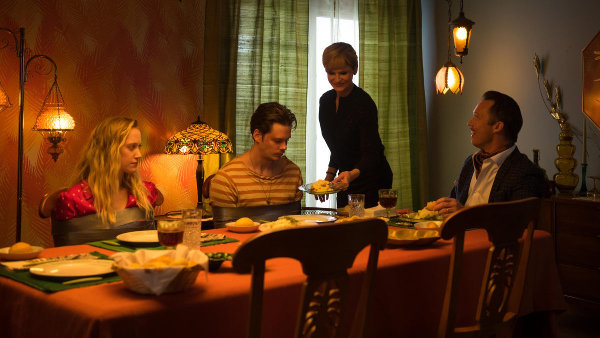
However, based on our film set experiences, it feels to us that this is a grave misunderstanding of human psychology, and how we all relate to and engage with our work. Fulfilled people communicate with others more clearly, ideate and problem-solve more freely, and devote themselves more passionately to the common goals of the group.
Now, all this may seem obvious. Perhaps you think that we’re over-complicating some version of the golden rule, or using a thousand words to say “be nice to people.” But if it were that obvious, then we wouldn’t hear so many horror stories about terrible set experiences, demoralizing bosses, or how there’s no reason to go above and beyond because most jobs feel like a one-way transaction. (Or, in the immortal words of Peter Gibbons in Office Space: “That’s my only real motivation … the fear of losing my job. But you know, Bob, that will only make someone work just hard enough not to get fired.”)
Creating real change requires a fundamental reprogramming of how people think about work, and the relationships between employees and their jobs. There’s a better world out there, but it appears frustratingly out of reach in our current sociopolitical climate. It necessitates a new dynamic in which we value happiness and a sense of purpose over cold, hard numbers; in which there’s a focused examination of what happiness even looks like, and how it can be measured.
All this is to say, we don’t have an actionable solution that can work on every set or in every industry. But we know what we’ve experienced. So we’ll continue to try and be the change we want to see. We’ll keep experimenting in the little petri dishes of our film shoots, taking notes and making observations. And perhaps, if we’re lucky enough to keep making movies, one day we’ll figure out the exact prescription for making work not suck.
If we do, we’ll let you know.



